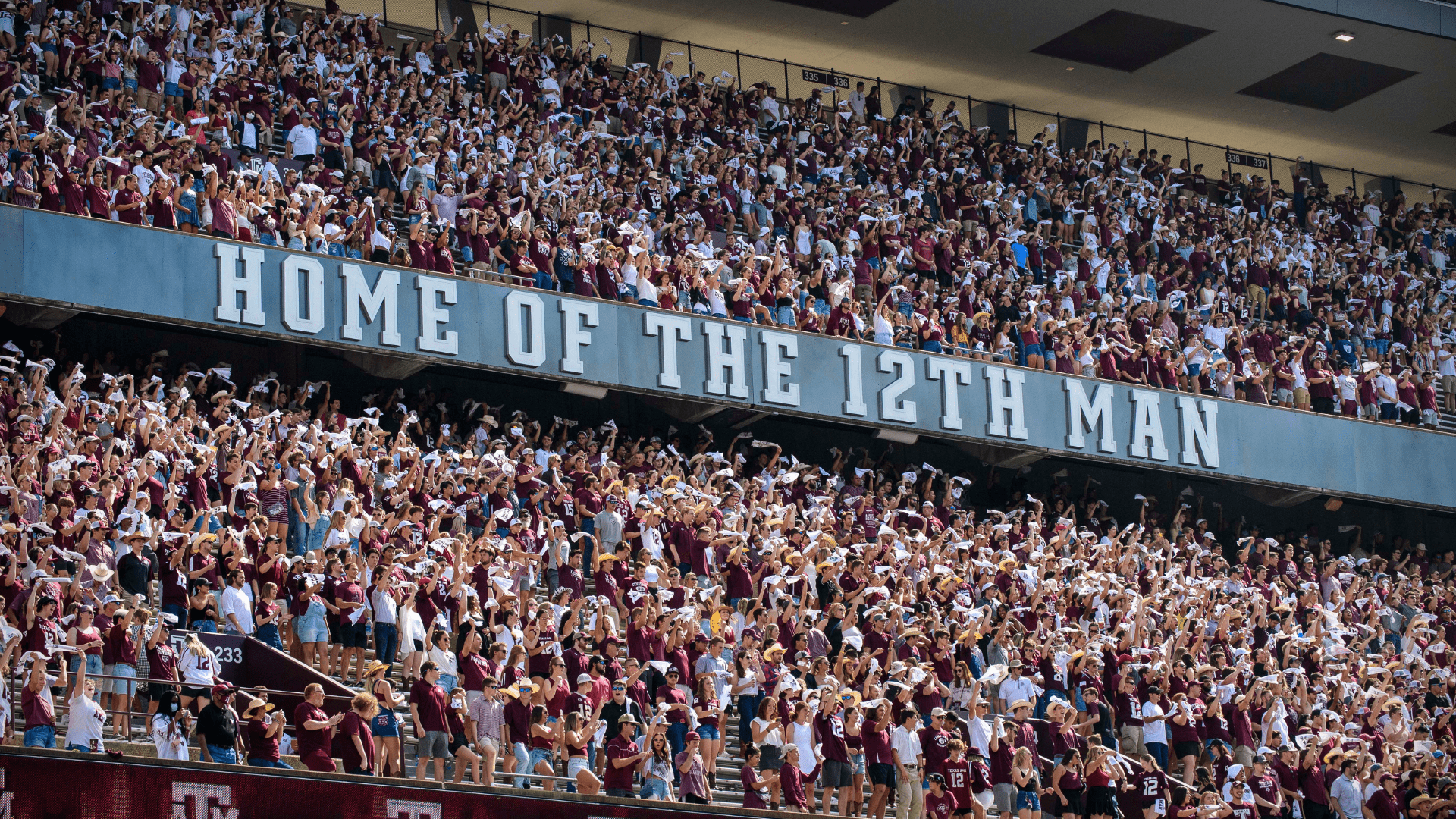
Let me tell you a secret.
Despite what you have constantly heard for generations, the Texas A&M Aggies are not an elite football program. I know that may be a bit of a stunning and harsh revelation, and one that has turned your world upside down this week filled with turkey, cornbread dressing, and pumpkin pie.
Also, while we are at it, there is no real good reason to have canned cranberry sauce on the table for Turkey Day. Like Texas A&M, it may be tradition but it isn’t a great tradition and maybe not even a good one.
As long as there have been men drilling into the ground for Texas Tea, the narrative about Texas A&M being one of the upper-echelon programs in college football has been pumped into the sports landscape. A narrative that has ratcheted up since the university opted to pay Jimbo Fisher $76 million to not coach their football team.
Yet, as easy as it may be to say that Texas A&M is an elite program, it is a lazy and false narrative and one that borders on being a negligent lie.
Yes, Texas A&M has unique traditions like “The 12th Man,” “Midnight Yell Practice,” a press box that sways during the game, and of course the famed “Junction Boys.”
Texas A&M is also located in a state that is one of the country’s recruiting hotbeds and has a seemingly never-ending flow of financial support from the barons of the gas and oil industry.
Despite those advantages, Texas A&M is not an elite program. Not now and not ever. It is not in the same stratosphere as old rivals and soon-to-be conference neighbors Texas and Oklahoma.
Texas A&M proudly claims three NCAA-recognized national titles but all three predate World War II, during an era when college football was played widely differently, and the Aggies were essentially a service academy. Texas A&M was primarily an all-male military institution with mandatory membership in the Cadet Corps, and that didn’t change until 1964.
So when the college football landscape began to shift in the 1950s and 1960s due to recruiting and the emergence of the southern-based teams, Texas A&M found itself not being able to keep up akin to Army and Navy — who combined to win five national titles from 1914 to 1950 but never came close again.
To further that point, in the 85 years — and yes it has been that long — since Texas A&M defeated Tulane in the Sugar Bowl to cap a perfect season and a title, the following “powerhouse” programs have been crowned national champions: Maryland, Syracuse, Michigan State, Arizona State, Brigham Young, and Georgia Tech.
Not only has Texas A&M not competed for national titles, the Aggies haven’t won their conference either. Yes, Texas A&M has won 18 conference titles. However, 17 of those occurred back in the old Southwest Conference days.
In the 16 years that Texas A&M resided in the Big 12, the Aggies won the league title the same amount of times (once) as Kansas State and Colorado did. The Aggies haven’t won the SEC West once in 12 years and counting. Yes, even the year when Johnny Manziel bested Alabama in Tuscaloosa and won the Heisman Memorial Trophy, the Aggies didn’t play for the league title.
Their old SWC rival Arkansas hasn’t won a title either in the mighty SEC but at least the Razorbacks have won their division and played for a title three times.
Texas A&M doesn’t win or even play for national and conference titles, which should nullify them from being considered “elite.” But what if you lower standards for what “elite” means?
Even though all programs have lulls, the elite ones also have stretches of posting undefeated perfect seasons on the resume or at least plenty of one-loss seasons. How do the Aggies stack up in that regard?
In the last 75 years, A&M has lost at least two games every season except four, and that includes the pandemic-shortened 2020 season.
For many others, a 10-win season is considered a benchmark of success on the gridiron. Well, guess what? A&M fails at getting to that milestone too.
In the last 25 years, the Aggies have won at least 10 games only twice.
During that same stretch, the TCU Horned Frogs have won 10 games a total of 13 times, and played for a national title last year. Kansas State has done it eight times, Oklahoma State seven times, and even Baylor has accomplished the feat six times.
Once again, Texas A&M is a good program but not elite.
Yes, the Aggies do have a rich history of good to great coaches roaming the sidelines.
Paul “Bear” Bryant famously coached there but departed for his alma mater Alabama and the rest is history. Aggie alum and “Junction Boy” Gene Stallings didn’t win big there but did at Alabama.
Jackie Sherrill led them to some success — winning three league titles — but got into trouble with the NCAA and then Jackie was gone. R.C. Slocum had a very good and consistent run there and is the program’s winningest coach, but the Aggies were never a national title contender.
Fisher arrived in College Station with the prestige of winning a national title at Florida State, and boosters backed up the Brinks truck for him, for facility upgrades and for NIL money to help buy recruiting classes. The thought was that Fisher was going to take the program to the next level.
Kevin Sumlin may have guided the Aggies to six straight winning seasons, in which the team went to six bowl games and won both the Cotton Bowl and Chick-fil-A Peach Bowl, but many still felt the program had grown stale and Sumlin couldn’t get them over the hump.
His tenure ended with no titles and a massive buyout.
There will be those who will tell you that A&M is a sleeping giant and that if they get the right guy and the right recruits then they will dominate college football — akin to what Dabo Swinney did at Clemson.
The problem with that comparison is that Clemson had to only really overcome one regional team on its ascent to college football mountaintop — Florida State. Swinney and the Tigers took full advantage of a lull in the Seminoles program, signed a generational class, and then won two national titles. That was the one big hurdle.
Texas A&M has always been a second-tier team in its own state and also is little brother to neighboring foes like Oklahoma and LSU. In addition, that heralded oil money pipeline everyone mentions also has long fueled recruiting to not only the Aggies but all of the Texas schools, as well as their old SWC foes.
It is a state and region where recruits wake up in the morning and find bags of cash on their porch and brand-new Camaros parked in the driveway. A&M has the same advantage as many of its other Texas schools — so that is not an advantage at all.
For nearly three-quarters of a century, the Aggies have had funding, quality coaches, and easy access to star players and yet have never been a national contender. Not once. The reality is that Texas A&M is not on the same level as Georgia, Alabama, Texas, and Oklahoma. They are on the level of Oklahoma State, Kansas State, or Arkansas. That makes them good but not great.
Texas A&M is a lot like green bean casserole. It is a good dish and one you traditionally also have on the table for Thanksgiving. But it has never once been the featured dish, and it also pales in flavor to turkey or ham or pumpkin and apple pies. Green bean casserole is good but not great, just like Aggie football.
Raymond Partsch III is the co-host of “RP3, D-Loh & Meche” which is broadcast weekdays (11-1) on ESPN 103.7 Lafayette and 104.1 Lake Charles — Southwest Louisiana’s Sports Station.

